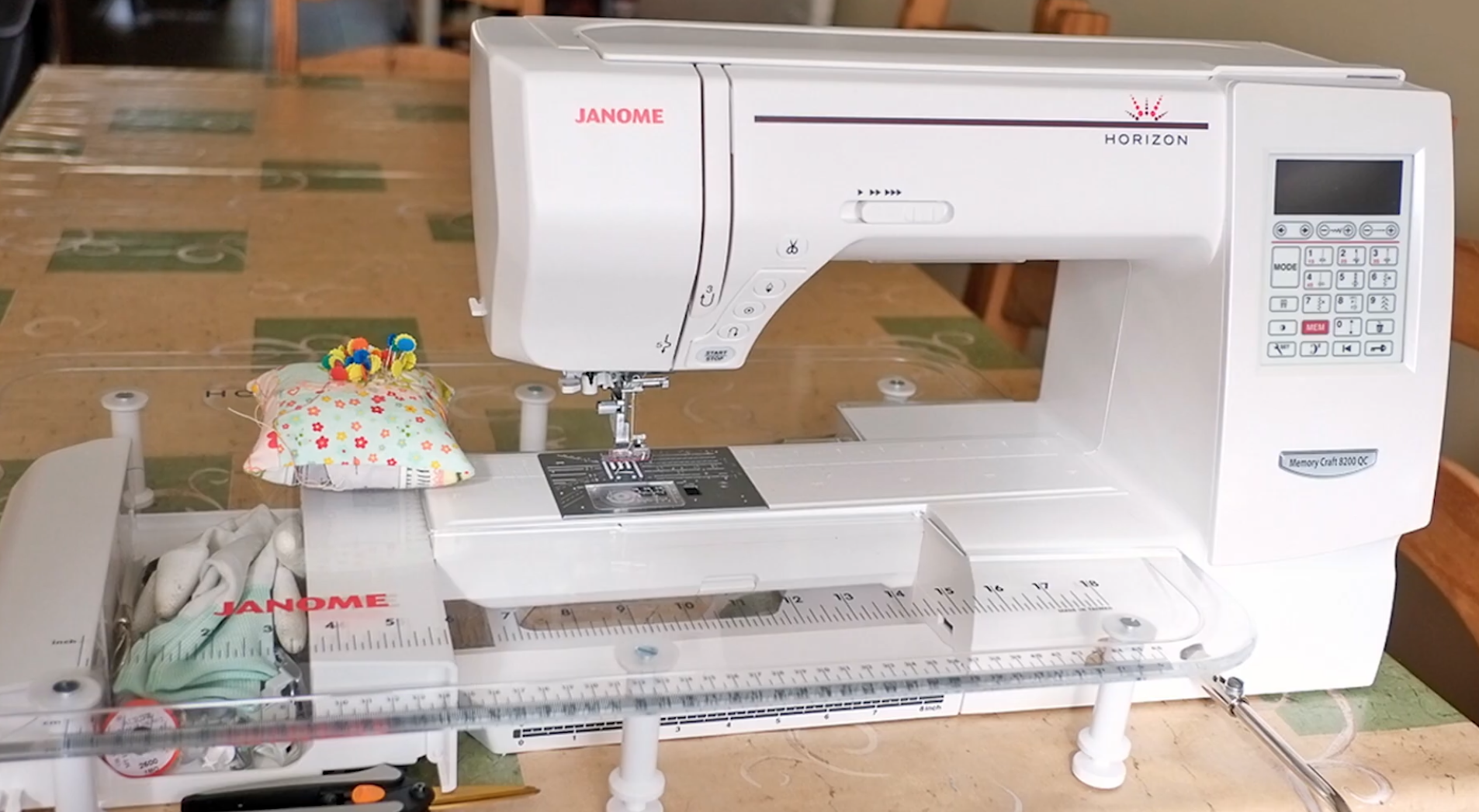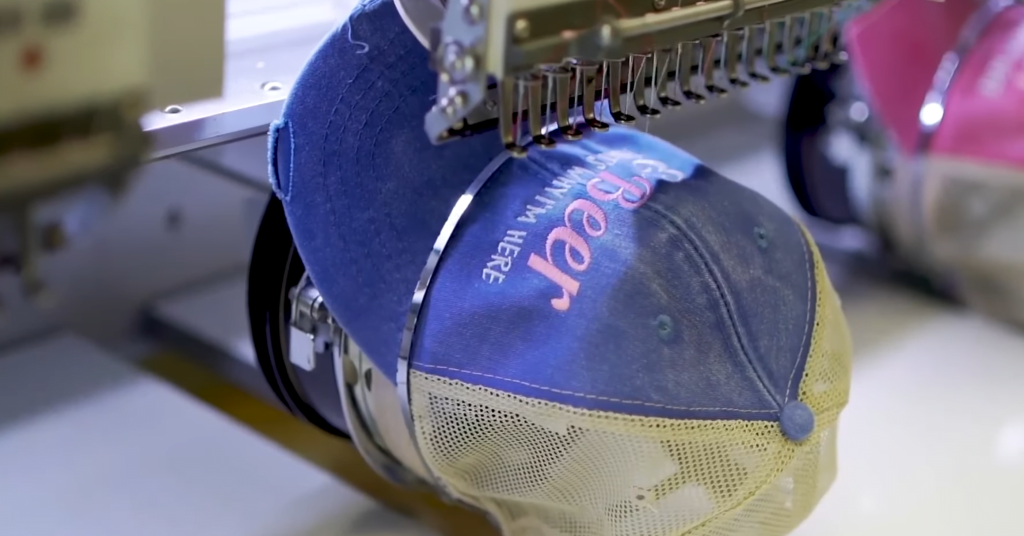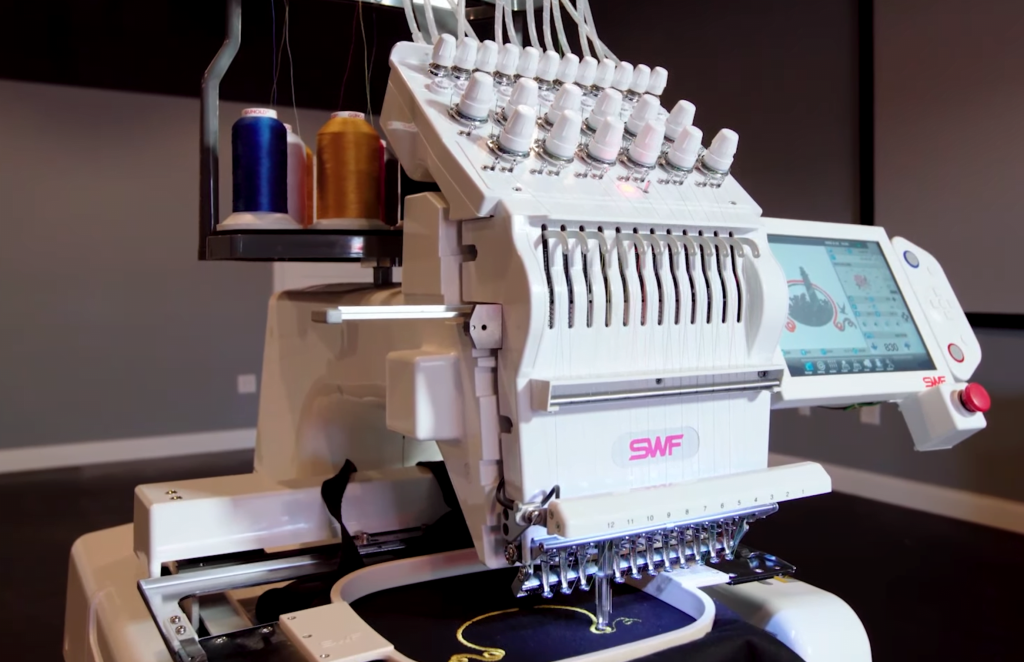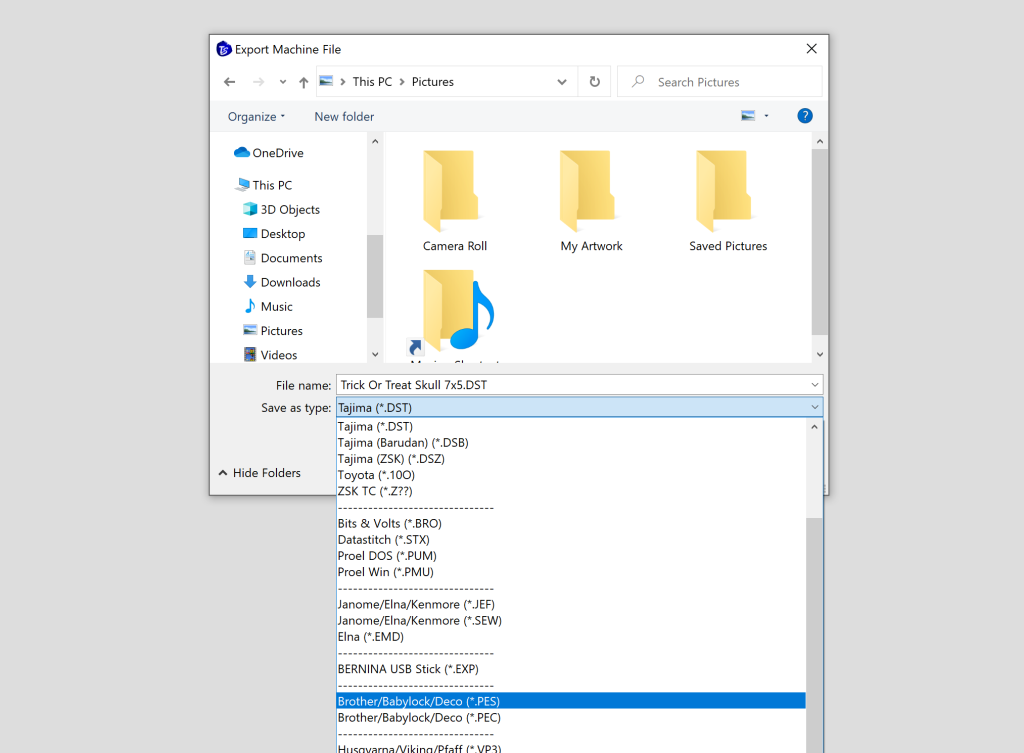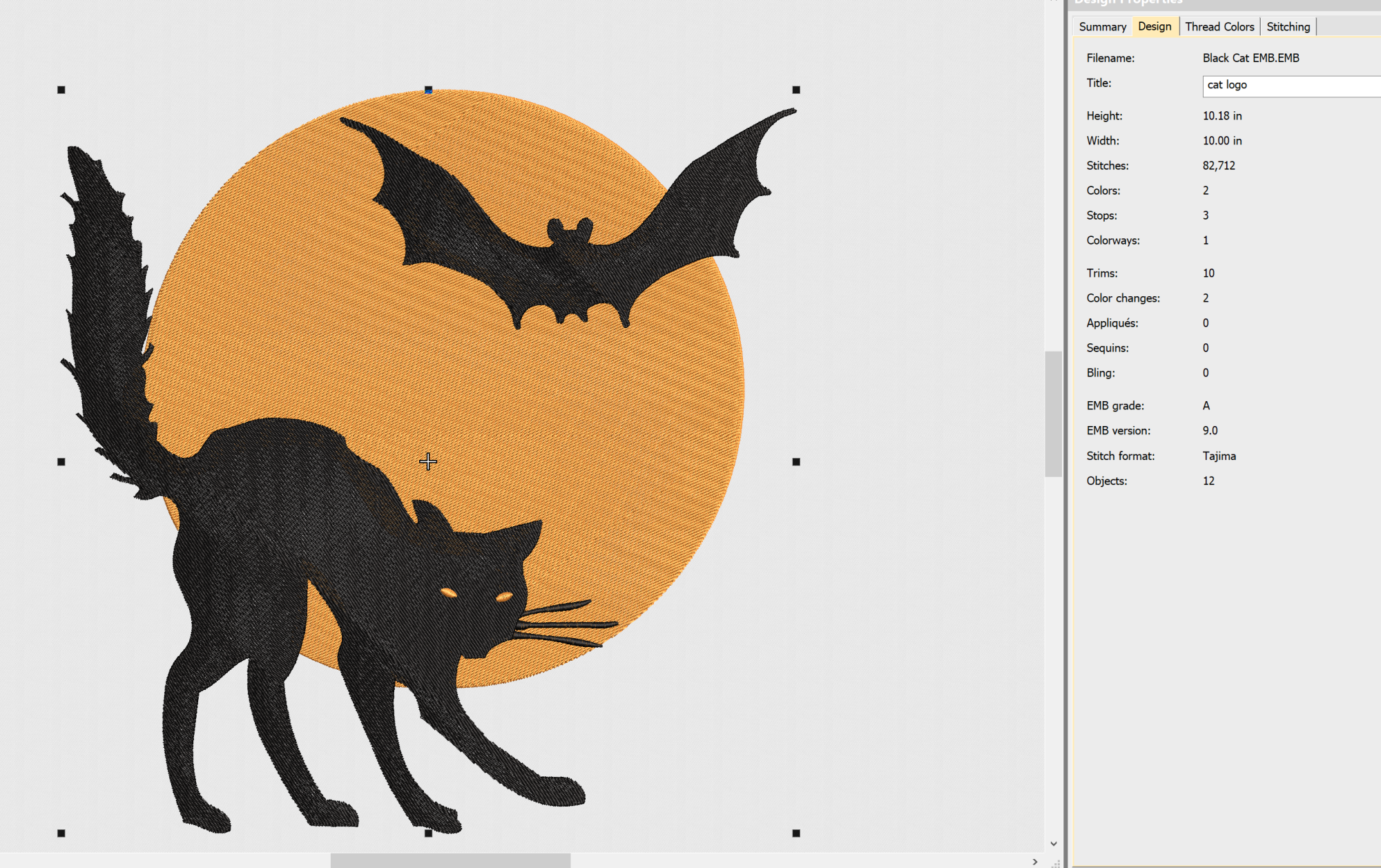One of the most crucial factors that influences the outcome of your embroidery projects is the tension settings on your machine. However, for people who are new to machine embroidery, tension tends to be one of the toughest concepts to grasp.
That’s because there is no standard “embroidery tension chart” to follow. Tension is just something you have to “get a feel for” and that takes a lot of trial and error and learning what settings work where. In this article, we’ll be discussing machine embroidery tension settings, and I’ll provide some guidance that should help you learn how to dial in your settings. Let’s get crafting!
Understanding Embroidery Machine Tension
Tension in Embroidery Machines
Embroidery machine tension is a delicate dance between the top and bottom threads. It involves the strategic application of resistance to both threads as they navigate the intricate mechanisms of the machine. Essentially, tension acts as the conductor, ensuring that the threads work together seamlessly to create consistent and visually appealing embroidery.
The Purpose of Tension
At its core, the purpose of tension in an embroidery machine is to regulate the flow and pull of the threads. By carefully balancing the resistance applied to both the top and bottom threads, tension plays a pivotal role in shaping the final outcome of your embroidery project. Achieving the right tension is akin to finding the optimal equilibrium where threads interlock precisely, resulting in well-formed and polished stitches.
The Significance of Balanced Tension
Learning to balance the tension on your machine is vital. It serves as a safeguard against a myriad of common issues that can plague embroidery projects, including thread breakage, fabric puckering, and the dreaded uneven stitches. When tension is finely tuned, the top and bottom threads lie flat against the fabric, creating the professional finish that you’re looking for.
Types of Tension Systems in Embroidery Machines
Embroidery machines employ various tension systems to regulate the delicate balance between the top and bottom threads. Understanding these systems is crucial for fine-tuning your machine and achieving optimal stitch quality. Let’s explore the primary types of tension systems in embroidery machines.
Top Thread Tension
- Location and Adjustment:
- The top thread tension is typically controlled by a tension adjustment dial on the machine. This dial allows you to increase or decrease the tension applied to the top thread.
- Impact on Stitch Formation:
- Proper adjustment of the top thread tension ensures that the thread flows smoothly through the machine, contributing to the formation of even and well-defined stitches. Too much tension can lead to tight, puckered stitches, while too little tension may result in loose and loopy stitches. Hence, why balance is very important.
Bobbin Thread Tension
- Location and Adjustment:
- The bobbin thread tension is adjusted using a small screw on the bobbin case.
- Some machines may have a separate bobbin tension adjustment mechanism.
- Role in Stitch Quality:
- Bobbin thread tension is equally vital for achieving balanced stitches. Proper tension on the bobbin thread ensures that it interlocks seamlessly with the top thread, creating a uniform appearance on both sides of the fabric and a strong design.
While this can be intimidating at first, don’t fret! It’s okay to experiment with different settings, and you should be experimenting so you can learn which settings work with which fabrics and threads!
How do you know when your machine’s tension is off?
For beginners, knowing when you tension is off can be a bit confusing. Below you’ll find some guidance that will help you identify and troubleshoot tension issues. However, please keep in mind that there is no one-size fits all solution for tension issues! You’ll need to play around with the settings yourself until you achieve your desired results.
Embroidery thread is breaking
- High Top Tension:
- Excessive tension on the top thread can lead to frequent thread breakage. If your thread is snapping, try adjusting here.
- Low Bobbin Tension:
- Inadequate tension on the bobbin thread can also result in breakage. Insufficient tension allows the bobbin thread to unravel easily, causing interruptions in the stitching process.
Fabric Puckering
- High Top Tension:
- Overly tight top tension can cause the fabric to pucker or gather. This can be more noticeable on certain fabric types, but in any case, a tension adjustment is most definitely in order.
- Low Bobbin Tension:
- Inadequate bobbin tension may contribute to fabric puckering as well. Insufficient tension fails to secure the stitches properly, leading to a wrinkled or distorted fabric surface.
Uneven Stitches
- Imbalanced Top and Bobbin Tension:
- Uneven stitches, where the top and bottom threads fail to interlock properly, indicate an imbalance in tension, too.
In the next section, we will delve into the step-by-step process of adjusting top thread tension, providing you with practical insights for achieving the perfect balance.
Adjusting Top Thread Tension
Follow these steps to adjust the top thread tension on your embroidery machine:
Locating the Tension Adjustment Dial
- Consult Your Machine’s Manual:
- Refer to your machine’s manual to identify the location of the top thread tension adjustment dial. The dial is typically situated on the machine’s front or top, allowing easy access for adjustments.
Using the Tension Adjustment Dial
- Start at the Default Setting:
- Begin with the tension dial set to the default or recommended position by your machine’s manual. This provides a baseline for making gradual adjustments based on your project’s needs.
- Making Adjustments:
- Turn the tension dial incrementally, making small adjustments at a time. Test the machine on a scrap piece of fabric between each adjustment to assess the impact on stitch quality.
- Observing Stitch Formation:
- Pay close attention to the stitches’ appearance, ensuring they are even and well-formed. Continue adjusting until you achieve the desired stitch quality without signs of tension-related issues.
Adjusting Bobbin Thread Tension
Proper bobbin thread tension is equally crucial for balanced and professional-looking embroidery. Follow these steps to adjust the bobbin thread tension on your embroidery machine:
Locating the Bobbin Tension Screw
- Accessing the Bobbin Case:
- Open the bobbin case to expose the bobbin and the tension screw. The screw is typically located on the side of the bobbin case.
Using the Appropriate Tools for Adjustment
- Precision Screwdriver:
- Use a small, precision screwdriver to make controlled adjustments to the bobbin tension screw. Turn the screw clockwise to increase tension and counterclockwise to decrease it.
- Testing and Ensuring Balanced Tension:
- Test the machine on scrap fabric, observing the interaction between the top and bobbin threads. Adjust the bobbin tension until you achieve a balanced stitch formation.
Tips for Achieving Balanced Tension
Achieving optimal tension is complicated because it depends not only on your machine’s settings but on external factors as well. The fabric you’re embroidering on, your thread choice, and even the needle you’re using can all impact your tension settings. Here are a few situation additional tension-related tips to help guide you.
Importance of Thread and Needle Compatibility
- Choosing the Right Thread:
- Select high-quality embroidery thread suitable for your fabric and chosen design Also, make sure the thread weight matches the needle size to maintain optimal tension. (Check this article for help with choosing the right thread.)
- Special settings for specialty thread:
- Specialty threads may require different tension settings. For example, if you’re using metallic threads for embroidery, you may want to try loosening your tension to make them easier to work with.
- Needle Selection:
- Use the appropriate needle type and size for your chosen fabric and thread, a mismatched needle can lead to tension issues and compromise your stitch quality. (Check this article for help with choosing the right needle.)
Check and Clean Your Machine Regularly
Did you know that not keeping up with your embroidery machine maintenance can cause tension issues? Regularly cleaning your embroidery machine is important for many reasons, but a dirty machine can definitely have issues maintaining tension. (Read this article to learn how to clean and maintain your embroidery machine.)
- Routine Maintenance:
- Regularly clean lint, debris, and thread residue from your machine. A clean machine operates more smoothly and reduces the risk of tension-related problems.
Testing Tension Settings on Scrap Fabric
- Trial Runs:
- Before starting a new embroidery project, conduct test runs on scrap fabric. This allows you to fine-tune tension settings without impacting your actual design or ruining your project blanks.
Understanding the Impact of Fabric Type on Tension
- Fabric Thickness:
- Adjust tension settings based on the thickness of the fabric. Thicker fabrics may require slightly looser tensions to accommodate the additional bulk.
- Fabric Stretchiness:
- Stretchy fabrics may benefit from slightly tighter tensions to prevent distortion during stitching.
Experimenting with Tension for Different Designs and Fabrics
- Customizing Tensions:
- Experiment with tension settings when working on various designs and fabrics. Customizing tensions based on the intricacies of each project can lead to optimal results.
- Keeping a Tension Log:
- Maintain a log of tension settings for different fabrics and designs. This log serves as a valuable reference for future projects, saving time on adjustments.
In closing, embroidery machine tension is definitely frustrating at first, but with a bit of work you can master it! Just make sure to keep your machine well-maintained, and make small adjustments until you achieve your desired stitch out.

Barb, our resident quilter and embroidery aficionado, weaves a thread of creativity through our collection. Serving as the curator of machine embroidery content, Barb infuses each design with a touch of her artistic expertise. The free embroidery patterns you discover on our site often bear the mark of Barb’s craftsmanship. Let’s get crafting!
